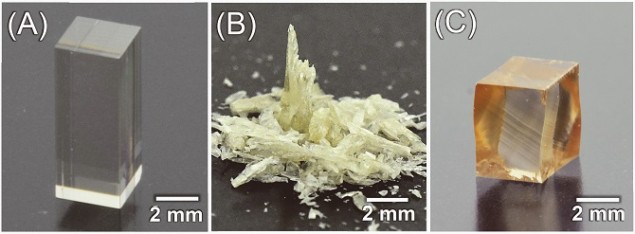
Despite the useful electronic properties that sparked the semiconductor industry, the brittle mechanical properties of semiconductor materials have become an increasingly limiting factor in developing new applications. Now experiments under cover of complete darkness suggest that semiconductors that appear brittle may be capable of extraordinary plastic deformations when the lights are out.
Yu Oshima, Atsutomo Nakamura, and Katsuyuki Matsunaga at Nagoya University in Japan tested the response of single crystal ZnS samples under applied stress when illuminated with white light, UV and in complete darkness. The electrical and optical properties of ZnS have already found use in luminescent and infrared optical devices as well photocatalysts, and it is readily available in large crystals that are convenient for deformation tests.
Behaviour changes with the lights out
The researchers found that although under white light and UV illumination the structures fractured at strains of just a few per cent, in total darkness they withstood strains of up to 45%. The bandgap of the crystal was also affected by the presence or absence of illumination giving crystals deformed in the dark a more orangey hue.
Oshima, Nakamura and Matsunaga attribute the difference in mechanical properties to the difference in the dislocations induced with and without the presence of light. Illumination can excite electrons into bandgap states at the dislocation edge so that the dislocation is charged and less mobile, inhibiting plastic deformation.
“It is interesting to find out that the inorganic semiconductor can exhibit extraordinary plasticity when it deforms in complete darkness,” they conclude in their report. “This suggests that the mechanical strength and fracture properties in inorganic semiconductors maybe controlled by exposure to light.”
They also highlight the ramifications for materials processing. The behaviour of dislocations plays a critical role in the synthesis and processing of most crystalline materials, including film synthesis and epitaxial crystal growth. The results suggest light exposure may also affect these processes.
Full details are available in Science.



